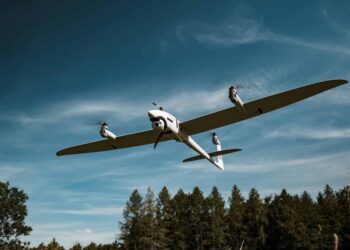US Air Force, WRIGHT-PATTERSON AFB, Ohio: Back in 1973, the 1553 multiplex data bus was the wave of the future for military aircraft. It replaced bulky equipment in passing data between sensors, computers, indicators and other aircraft equipment. It reduced weigh and was simpler and more flexible.
That was more than 30 years ago. The old data bus can not handle the task of relaying data for today's sophisticated warfighting systems. Think of a data bus as a two-lane highway. Now try to get to work on that two-lane highway when there is six lanes worth of traffic.
To solve that problem, the Aging Aircraft Systems Squadron here it testing a more robust 1553 data bus. It is a solution that will benefit warfighters from all of the services as it leads to more capable combat aircraft and ground equipment.
“We've been working with (the Air Force Research Laboratory), the Air Logistics Center at Tinker AFB, Okla., and our own engineers,” said Orlando Cortes, lead engineer, “to acquire and test what we call an 'extended' or more robust 1553 data bus.”
The new data bus — encompassed in either a computer card or chip set — enables anaircraft to shuttle 200 megabits of data per second back and forth between its sytems. Current data rates are only one megabit per second.
The new data bus has an average error rate of one bit in a trillion, much lower than the old model. That provides a performance boost, because correcting errors in today's high-performance networks costs more resources than in older networks, said William Wilson, the Aeronautical Systems Center Engineering Directorate's technical auhtority for the squadron.
Developed by Edgewater Computing Systems in Ottawa, Canada, the extended 1553 data bus will give thousands of older aircraft in the Air Force inventory some of the same capabilities being built into 21st Century aircraft. For example, the bus will give older aircraft the ability to use the Joint Tactical Radio System and other applications that require higher bandwidth without having to re-wire the entire aircraft.
The extended data bus — originally developed by Edgewater and verified by the Air Force through a Dual-Use Science and Technology contract with that company — has been successfully tested in mock subsystems for an F-16 Fighting Falcon aircraft. It will be flight-tested on circuit cards for an F-16 cockpit display and data processing unit at Hill Air Force Base, Utah, next summer.
The new data bus will enable the Air Force and its contractors to modify any aircraft that uses the original data bus. For the Air Force, that is almost all aircraft manufactured since the 1970s, or almost all of the aircraft in the inventory.
Germany says adding explosive drones to weapons arsenal
Germany said Friday it would buy explosive drones for the first time as Berlin boosts investments in its armed forces...









